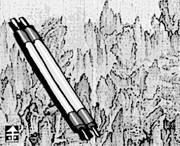‘Borrowing’ our cultural heritage

The classical landscape painting, “Mongyudowondo (Dream Journey to the Land of Peach Blossoms),” has gone through a twisted fate. The painting is a masterpiece of Eastern art, but was nearly on the verge of being lost forever. Fortunately the painting has been preserved, although it is in Japan, but it could have easily been destroyed as evidence of a plot to overthrow a Joseon king. Its story goes as follows.
One night in 1447, Prince Anpyeong, King Sejong’s third son, saw a paradise of peach trees in his dream. Afraid that he might forget the surreal memory, he had the painter Ahn Gyeon record his vision on canvas. On New Year’s Day three years later, the prince held a ceremony of appreciation for the painting with scholars and noblemen. Ahn Pyeong, an excellent calligrapher at that time, wrote the title and some 20 people including Kim Jong-seo, Seong Sam-mun, Park Paeng-nyeon, Choi Hang and Lee Gae, wrote and recited poems in praise of the painting. It became a masterpiece that combined poetry, calligraphy and painting.
A few years later in 1453, Prince Suyang staged a coup. He falsely accused his brother Anpyeong of a conspiracy and sentenced him to death. Prince Anpyeong’s artistic friends were killed as well.
If Mongyudowondo, which bears the stamps of the rebellious officials, had been delivered to Prince Suyang, the painting would have been regarded as evidence of the plot and burned. Nobody knows for sure, but perhaps the artwork was saved by someone who realized the aesthetic value of the painting.
After the coup, the whereabouts of the painting remained unknown. But some 470 years later, the painting turned up in Japan in 1929. A merchant in Osaka who was in possession of the painting at that time publicized the artwork’s existence among scholars. An 1893 certificate stating that the painting was the property of the Shimasu family was attached.
The Shimasu were kin to the feudal lord who ruled what is now Kagoshima for a hundred years. During the Imjin War in 1592, the Shimasus came to Korea with soldiers and abducted artists from Namwon and the vicinity as prisoners of war.
But since there are no records on the whereabouts of the painting before 1893, we cannot define it as having been stolen. Suspicion without any real evidence does not work in international law.
It is likely that we will be able to view the painting in Seoul in September. In coordination with Tenri University, which holds the painting today, Mongyudowondo will be borrowed and displayed for four weeks, as was done in 1996.
It is pleasing that we can appreciate our cultural heritage that contains the spirit of our ancestors. Nonetheless, it is shameful that we have to borrow it in order to do so.
The writer is a deputy political news editor of the JoongAng Ilbo.
By Yeh Young-june [yyjune@joongang.co.kr]










with the Korea JoongAng Daily
To write comments, please log in to one of the accounts.
Standards Board Policy (0/250자)